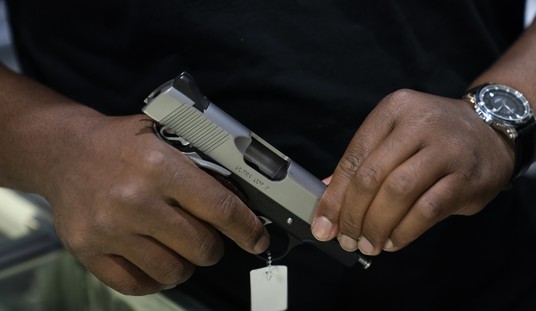In addition to handing down its verdict in the Bruen case, the Supreme Court took another step towards deciding several other Second Amendment-related cases before it adjourned for its summer recess a few weeks ago by granting cert and vacating four lower court decisions in cases dealing with bans on “large capacity” ammunition magazines, so-called assault weapons, and the right to carry. Those four cases were remanded back to the appellate courts with instructions from SCOTUS to reconsider their rulings in light of the Bruen decision, but on Friday the Ninth Circuit Court of Appeals made the decision to send a case dealing with the right to openly carry a handgun in Hawaii all the way down to the U.S. District Court, despite the fact that the law in question is clearly implicated by Bruen.
You might remember the case known as Young v. Hawaii thanks to the bizarre Ninth Circuit opinion upholding Hawaii’s “may issue” licensing system for openly-carried firearms. The Ninth Circuit had previously ruled that the Second Amendment doesn’t protect the right to carry a concealed firearm, and in Young v. Hawaii the appellate court found that there’s no right to openly carry a gun either; a decision that gave more weight and credence to Hawaii territorial law than the Bill of Rights. Given that SCOTUS has now said that “may issue” laws are not compatible with the Constitution, you’d think the Young case would be a pretty simple one to now figure out, but instead an en banc panel voted 7-4 to kick the case back down to district court; a decision which will likely add a couple of more years of litigation to the case that is already a decade old.
Judge Diarmuid O’Scannlain, who was the majority author of a three-judge decision that originally struck down the Hawaii statute, issued a scathing dissent to the Ninth Circuit’s most recent decision, arguing that the appellate court has all the information needed to put this case to rest.
Because “the Constitution presumptively protects” Young’s right to carry arms in public for self-defense, Hawaii “must . . . justify its regulation by demonstrating that it is consistent with the Nation’s historical tradition of firearm regulation.” Put differently: since the Second Amendment guarantees to the people “a general right to public carry,” the constitutionality of section 134-9 hinges on whether there was at the time of the ratification of the Second Amendment or the Fourteenth Amendment “a tradition of broadly prohibiting the public carry of commonly used firearms for self-defense.” The government has the burden to show such a tradition.
But Hawaii cannot meet its burden, because, as the Supreme Court held in Bruen, there was no such tradition. Nor was there a “historical tradition limiting public carry only to those law-abiding citizens who demonstrate a special need for self-defense.” Historical restrictions on public carry may have “limited the intent for which one could carry arms, the manner by which one carried arms, or the exceptional circumstances under which one could not carry arms.” But such valid historical exceptions are quite the opposite of section 134-9, which flips the presumption by limiting public carry licenses to “an exceptional case.” A law-abiding citizen need not demonstrate a special need to exercise his or her right to carry arms in public for selfdefense. Id. But like the New York law at issue in Bruen, section 134-9 requires ordinary citizens like Young to demonstrate an exceptional reason to obtain a public carry permit. Thus, section 134-9 violates the Fourteenth Amendment by “prevent[ing] law-abiding citizens with ordinary self-defense needs from exercising their right to keep and bear arms.” Bruen admits of no other conclusion.
In other words, the ultimate outcome of the Young case isn’t really in doubt. The Supreme Court has said that requiring individuals to demonstrate “good cause” or a “justifiable need” to bear arms in self-defense is unconstitutional, and O’Scannlain says there’s no good reason for the Ninth Circuit to punt the case back down to district court when it can clearly rule on the case right now.
We are bound, now, by Bruen, so there is no good reason why we could not issue a narrow, unanimous opinion in this case. The traditional justifications for remand are absent here. The issue before us is purely legal, and not one that requires further factual development. The majority does not explain, nor can it justify, its decision to remand this case to the district court without any guidance. Yet in its terse order and unwritten opinion, the majority seems to reveal a hidden rule in our Circuit: Second Amendment claims are not to be taken seriously. I would prefer to apply the binding decisions of the Supreme Court to the case at hand.
Instead of remanding without explanation or justification, we should reverse the district court in an opinion holding that Young has stated a claim upon which relief may be granted, that section 134-9 is unconstitutional, and that the case must proceed accordingly in district court. If we issued such an opinion, we would ensure that Bruen is applied uniformly in our Circuit in future cases. And in this case, we would save the parties and the district court the time and expense of continuing to litigate issues that we could resolve easily.
Today we shy away from our obligations to answer the straightforward legal questions presented on appeal and to provide guidance to the lower courts in our Circuit. And in doing so, we waste judicial resources by sending the parties back to square one at the district court. The parties have waited a decade to resolve this litigation, and Young has waited over ten years to exercise his constitutional right to carry a handgun in public for self-defense. Because we opt not to decide this simple case, we force Young to wait even longer. Someday, Young will finally be vindicated. Someday, our Court must issue an opinion that respects the rights enshrined in the Second Amendment.
Someday, but not today. In fact, it’s clear that the Ninth Circuit is going to drag its collective heels in acknowledging the Supreme Court’s decision in Bruen, just as some judges are going to try to ignore it outright whenever they can. We’ve already seen one U.S. District Judge in California claim that San Jose’s mandatory fee on legal gun owners is likely to be constitutional, arguing that the fee applied to every legal gun owner is historically analogous to “surety” laws from the 19th century that required a small number of gun owners thought to be at risk of committing violent offenses to first post a surety bond before they could legally bear arms in public. Now we have the Ninth Circuit refusing to handle the Young case on the merits; instead wasting everyone’s time and denying gun owners like George Young their ability to exercise their Second Amendment rights. It’s not exactly a shock to see the Ninth Circuit take this step given its historic hostility towards the right to keep and bear arms, but gun owners and Second Amendment activists are not going to be deterred from fighting for the full flower of their rights even if appellate courts try to slow-walk their march towards justice.









